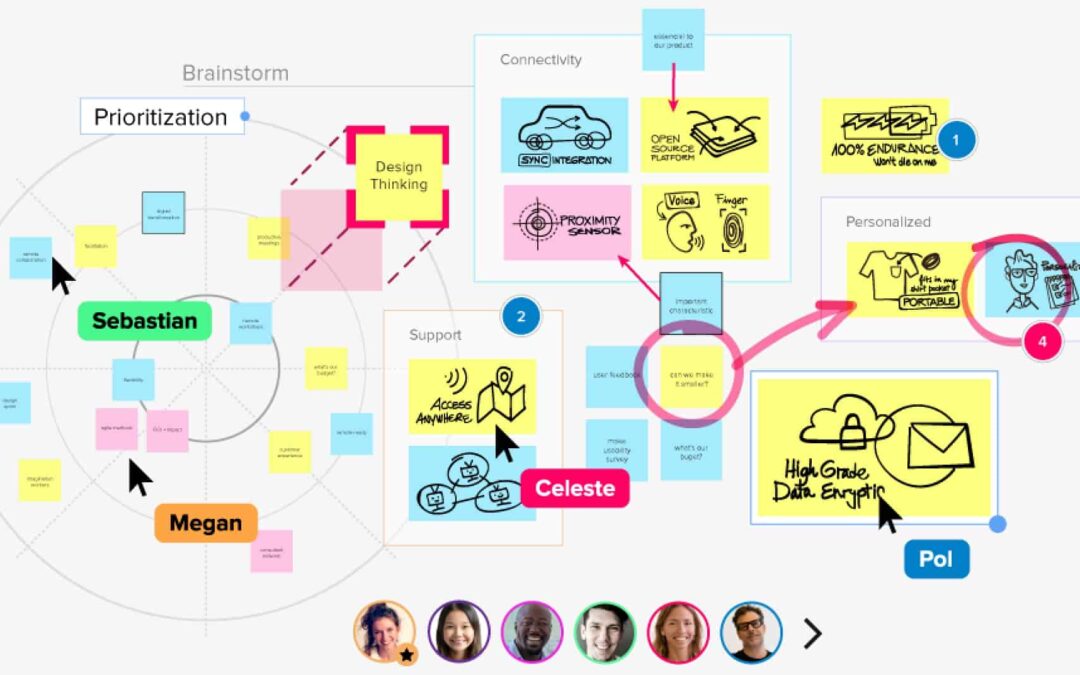Over the past 987,460 days of forced WFH, I’ve participated in several virtual ideations.
A few weeks ago, my turn to facilitate arrived. And, after four 4-hour sessions spread over two weeks, I can confidently declare this:
Virtual Ideation sucks.
We knew the experience wouldn’t be the same as an in-person session, so we did everything to adapt. At the end of each session, we asked participants to share their Rose/Bud/Thorn feedback. Between sessions, a smaller group met to review the feedback, reflect on our experiences, and make adjustments for the next session. We fixed 90% of the Thorns between sessions 1 and 2, and we hit our groove by session three.
But virtual Ideation still sucks.
There is simply no substitute for the energetic buzz of a room full of creators freed from the constraints of reality and excitedly imagining what could be. There is no substitute for the side conversations over caffeine and sugar where two or three innovators connect disparate dots and have an A-Ha! Moment. There is absolutely no substitute for the satisfaction that comes from stepping back and staring at a wall of ideas and the confidence that the answer is in there somewhere.
But, with Omicron and more companies realizing the hybrid work is the new reality, not a temporary stopgap, virtual ideation sessions are here to stay.
So how can we make virtual ideation sessions suck less?
Plan sprints, not marathons.
- What we did: We cut the ideation session down from the typical 8-hour day to four hours, and instead of trying to ideate on multiple topics in a single session, we had a single topic for each session. But the sessions were still too long to keep people engaged but too short to allow true reflection and building on ideas.
- What we learned: In a virtual setting,ideation sessions are a task, not an experience. Gathering people together for a day or two made lots of sense for logistical (usually held offsite, make participants less accessible to daily demands, reduce the cost of external facilitators) and experiential (enable focus, shift mindsets, get into the flow) reasons. But a virtual environment eliminates the logistical rationale for daylong sessions. It can’t deliver the experiential benefits because we can’t get away from the constant pinging of email, Slack, and text notifications.
- What we would do differently: Instead ofa four-hour session, I would do four one-hour sessions. Yes, it will take more days, but participants will be more focused on the task and more able to stay in the creative mindset (once you get them there). Plus, it has the added benefits of engaging more participants (looking at you, fellow introverts!) and giving people time to reflect and build on ideas.
Acknowledge that the practice and experience will be different
- What we did: We started the sessions by acknowledging that things would feel different, the experience would be far from seamless, and that we wanted quality over quantity. But we didn’t recognize participants’ feelings and expectations, and, as a result, the gaps between their hopes and their reality didn’t diminish.
- What we learned: Even though people know that the experience of a virtual ideation session is different from an in-person one, they still hope that it will be the same. This creates a challenge that participants will inevitably judge the experience not against their rational expectations but against their hopeful, emotional ones. And it will always come up short.
- What we would do differently: Start the session by clearly stating that the experience will be and feel different. Acknowledge that, for many, it won’t have the buzz or the rush of an in-person session. Admit that things will be more clunky because you’re relying on technology rather than your hands and feet to make things happen. Ask for their patience, support, and help to make the session and their experience of it as successful as possible. Then clearly define what success looks like.
Start with FUN!
- What we did: I hate icebreakers, “mandatory fun,” and forced group silliness. So, we didn’t do any of that in the first ideation session. Instead, we dove right into content, grounding people in the insights developed in the previous phase and introducing them to the resulting stimuli (personas, journey maps, analogies).
- What we learned: We were so task-focused that people didn’t have time to shake off their day-to-day reality, connect with the information, develop empathy for the customer, and allow themselves to be creative.
- What we did do differently: The second session started with FUN! but rather than a random icebreaker or silly exercise, we asked a question that required personal sharing and was relevant to the session’s topic. For example, if the session’s topic was “How might we create a more inspiring experience for members?” we asked participants to share their most inspiring experience.
By asking a personal question, people’s mindsets become more positive and open while they get more comfortable sharing and more curious about their fellow participants. By asking a relevant question, participants build empathy for the customer they are designing for, instantly build a library of experiences and analogies to draw from, and see possibilities beyond their day-to-day realities.
The irony of it all
What’s ironic is that, as I reflect on these lessons, they’re all things that I knew to be important, but I hadn’t yet experienced their importance.
Learn from my experience. Make these changes in your next ideation session.
What are your experiences? What have you learned? What can we learn from you?
